Recent Fire Damage Posts
Residual Damage from Fire!
3/26/2022 (Permalink)
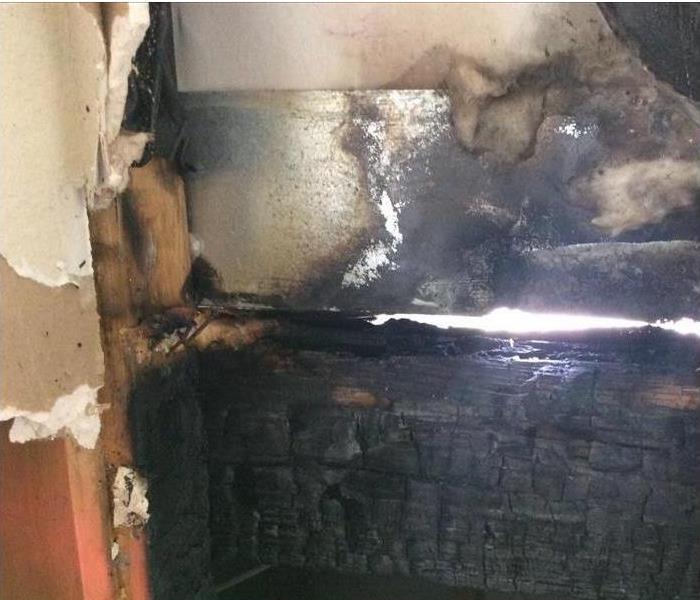 SERVPRO of Durant meets all the qualifications and more to make your home safe and back to normal
SERVPRO of Durant meets all the qualifications and more to make your home safe and back to normal
When dealing with fire damage, there is more to be cleaned up than just what is affected by the flames. Soot and smoke the fire leaves behind can continue damaging property long after the flames are extinguished, and this can give rise to other issues such as mold and rust as well.
If left untreated, this damage can compound over time, becoming more difficult and costly to remediate.
What Untreated Fire Damage Can Cause
If you’ve been affected by a fire, it is important to call your restoration team right away to prevent giving rise to other issues such as:
Soot Damage. Soot is the most common form of carbon byproduct that materials produce when they burn. Most home and commercial fires consist of multiple burned materials, leading to soot that is highly acidic. This acid can cause damage to nearly any surface it comes into contact with, with porous or textured surfaces being the most at-risk. Any soot allowed to remain in the affected area can lead to damage of carpets, walls and unburnt portions of the house. The longer the soot is allowed to sit, the more unlikely the damage can be reversed.
Mold Damage. After a fire, affected areas are often left without any artificial or natural lighting. If the fire was doused with water or set off a sprinkler system, this creates mold’s ideal environment to thrive. Mold can quickly begin growth on almost any surface, leading to discoloration and damage to items and structures.
Corrosion and Rust Damage. Rust and corrosion might not be the first thing you think of when you consider fire damage, but water left untreated on small electronics can cause it to develop and greatly increase the risk for short-circuits or electrical shock.
If you’ve been affected by a fire, know that SERVPRO of Durant meets all the qualifications and more to make your home safe and back to normal. Contact us today to learn how we’re able to make it “Like it never even happened.”
Why SERVPRO for Fire Damage Restoration
2/12/2022 (Permalink)
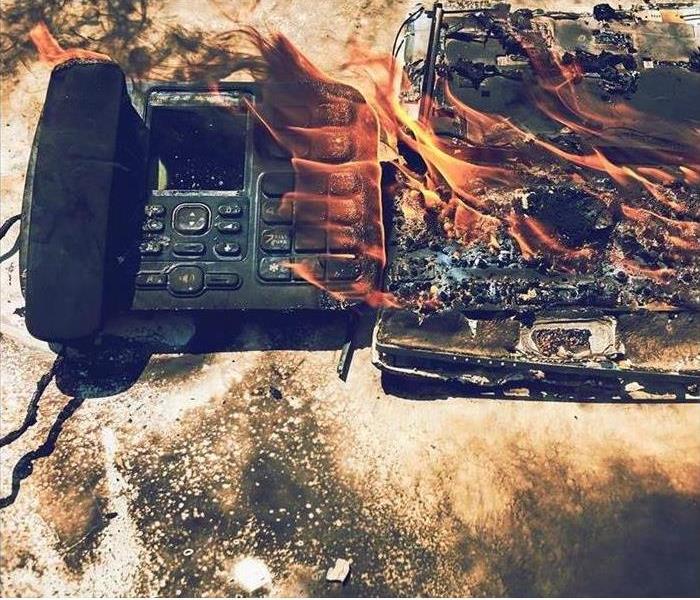 A fire is scary enough, do not tackle the damage on your own. Call SERVPRO of Durant we want to help.
A fire is scary enough, do not tackle the damage on your own. Call SERVPRO of Durant we want to help.
Why SERVPRO for Fire Damage Restoration
A fire in your residence can be an overwhelming experience. Often ignited by an accident or failure to monitor a common household task like cooking or a decorating decision like lighted candles, the blaze is unexpected. The homeowner or family members can feel incapacitated in the aftermath with fear or even guilt. Our professional fire restoration crews manage the damage and set your mind at ease.
The extent of and variations in the fire damage to your dwelling can be daunting. Your instincts and reliance on other cleanup experiences do not provide the foundation needed to mitigate the damage appropriately. Charring, smoke, and soot damage require specialized techniques, tools, and products for the best outcomes. Fire extinguishing also leaves most homes soaked in water and chemicals. This complex mix of challenges requires our broad spectrum of disaster restoration training and skills.
Water & Fire Damage Restoration
Our production team leads arrive ready to assess and plan for all aspects of the damage. Water removal and structural drying precedes other tasks for safety and to prevent secondary issues such as microbial growth. Then the SERVPRO team focuses on cleaning the residues left by the fire.
If the fire burned, fast and hot, loose and ashy debris is typical, frequent when the fire ignites paper or other quickly burning items. Fires in the kitchen are often protein-based, leaving a sticky, almost lacquer-like substance on surfaces. Electrical shorts and oily rags or other slower burning fires combust incompletely, spreading a dark, thick, and sticky soot. SERVPRO crews evaluate the characteristics of the residues and match tools and products to the particular circumstances of your home fire.
Ash and light soot respond well to brushing with dry sponges and vacuuming with HEPA fitted equipment. The hardened leavings of a kitchen fire can require solvents or other bond-dissolving cleaners. After electrical and other slower burns, heavy coatings benefit from cleaning products containing wetting agents and surfactants that loosen and lift the heavy soot. SERVPRO technicians train extensively in methods that allow for effective abrasive actions without permanent damage to the surfaces treated when the soot adheres firmly.
We work fast but professionally, the speed necessary because the acidic residues from a fire progressively damage all building materials and your prized possessions. SERVPRO also packs out fire damaged movable items to clean and restore off-site. We also offer deodorization services that eliminate, not cover up, fire-related smells. All the tasks take time, most efficiently done by our team of fire damage specialists.
Take the first steps to restore your home to “Like it never even happened.” Engage the services of SERVPRO of Durant. Call (580) 740-4848 immediately after the firefighters leave to get the process moving.
Restoring Your Home After a Fire
2/5/2022 (Permalink)
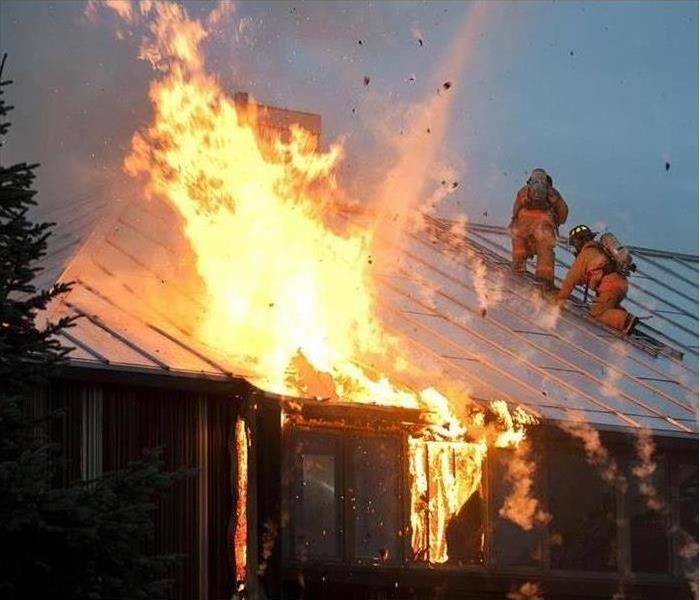 Many methods are used when restoring a home after a fire. Contact SERVPRO right away and let our expertise work for you.
Many methods are used when restoring a home after a fire. Contact SERVPRO right away and let our expertise work for you.
How Do You Restore a House After a Fire
Having your home and belongings damaged by a fire can be devastating for everyone involved. However, by getting content cleaning and fire restoration services on the job right away and investing in a few things like dry-cleaning and content storage, you can help to bring your home back to its former glory. There are a few steps you should follow to get everything on track for recovery:
- Getting in touch with your insurance company
- Locating a reliable fire and smoke cleanup crew
- Finding a storage space for undamaged belongings
Contacting Insurance
After dealing with emergency services, your insurance company should be the first call you make. Your insurance professionals can help estimate how much your repairs will cost and direct you to fire cleaning professionals who are covered by your homeowners insurance. This can help you get the financial support you need during the recovery process.
Choosing Your Crew
While your insurance company will likely suggest and endorse a number of cleanup crews, it’s ultimately up to you to decide who you want to trust with your home content cleaning. Do your research and find a company that has a reputation for getting the job done right and for following up on their results after you’re settled back into your home.
Finding Storage Solutions
During your cleanup process, crews are likely to use machines and chemicals that rid your home of smoke smells. It’s always a good idea to move undamaged belongings into a storage unit until your home is completely repaired to protect them from dust, debris, and even water from damaged roofing or pipes. Dry cleaning may be appropriate for some minimally damaged belongings.
Between dry-cleaning, working with insurance agents and all of the other steps of content cleaning after a fire, the home recovery process can be a long one. However, it’s well worth it to feel safe and secure in your own home again.
Smoke and Soot Cleanup
12/4/2021 (Permalink)
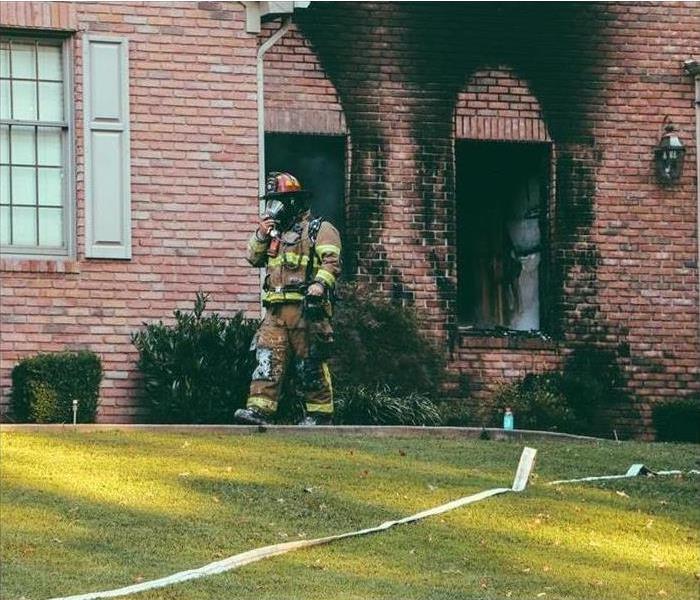 SERVPRO of Durant has the equipment, expertise, and experience to restore your fire and smoke damage.
SERVPRO of Durant has the equipment, expertise, and experience to restore your fire and smoke damage.
Smoke and soot is very invasive and can penetrate various cavities within your home, causing hidden damage and odor.
Our smoke damage expertise and experience allows us to inspect and accurately assess the extent of the damage to develop a comprehensive plan of action.
Smoke and soot facts:
Hot smoke migrates to cooler areas and upper levels of a structure.
Smoke flows around plumbing systems, seeping through the holes used by pipes to go from floor to floor.
The type of smoke may greatly affect the restoration process.
Different Types of Smoke
There are two different types of smoke–wet and dry. As a result, there are different types of soot residue after a fire. Before restoration begins, SERVPRO of Durant will test the soot to determine which type of smoke damage occurred. The cleaning procedures will then be based on the information identified during pretesting. Here is some additional information:
Wet Smoke – Plastic and Rubber
Low heat, smoldering, pungent odor, sticky, smeary. Smoke webs are more difficult to clean.
Dry Smoke – Paper and Wood
Fast burning, high temperatures, heat rises therefore smoke rises.
Protein Fire Residue – Produced by evaporation of material rather than from a fire
Virtually invisible, discolors paints and varnishes, extreme pungent odor.
Our Fire Damage Restoration Services
Since each smoke and fire damage situation is a little different, each one requires a unique solution tailored for the specific conditions. We have the equipment, expertise, and experience to restore your fire and smoke damage. We will also treat your family with empathy and respect and your property with care.
Cooking Fires
11/27/2021 (Permalink)
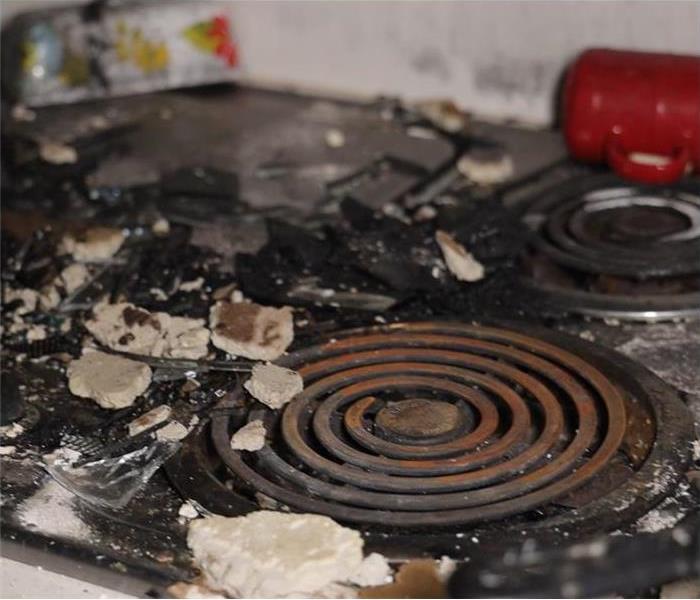 Cooking is the main cause for home fires and injuries.
Cooking is the main cause for home fires and injuries.
According to the National Fire Protection Association, cooking is the main cause for home fires and injuries, with Thanksgiving and Christmas being the peak days for cooking-related fires. Review the following safety tips to help ensure you enjoy a safe holiday.
- Do not wear loose clothing or dangling sleeves while cooking.
- Never leave cooking food unattended- stay in the kitchen when frying, grilling or broiling food. If someone must leave the kitchen for even a short period of time, they should turn off the stove.
- Check food regularly while cooking and remain in the home while cooking. Use a timer as a reminder that the stove or oven is on.
- Keep the kids away from the cooking area. Enforce a “kid-free zone” and make them stay at least three feet away from the stove.
- Keep anything flammable- pot holders, oven mitts, wooden utensils, paper or plastic bags, food packaging, and towels or curtains- away from the stove, oven or any other appliance in the kitchen that generates heat.
- Clean cooking surfaces on a regular basis to prevent grease buildup.
- Purchase a fire extinguisher to keep in the kitchen. Contact the local fire department to take training on the proper use of extinguishers.
- Always check the kitchen before going to bed or leaving the home to make sure all stoves, ovens, and small appliances are turned off.
- Install a smoke alarm near the kitchen, on each level of the home, near sleeping areas, and inside and outside bedrooms. Use the test button to check it each month. Replace all batteries at least once a year.
The Potential Causes for Electrical Fires
9/18/2021 (Permalink)
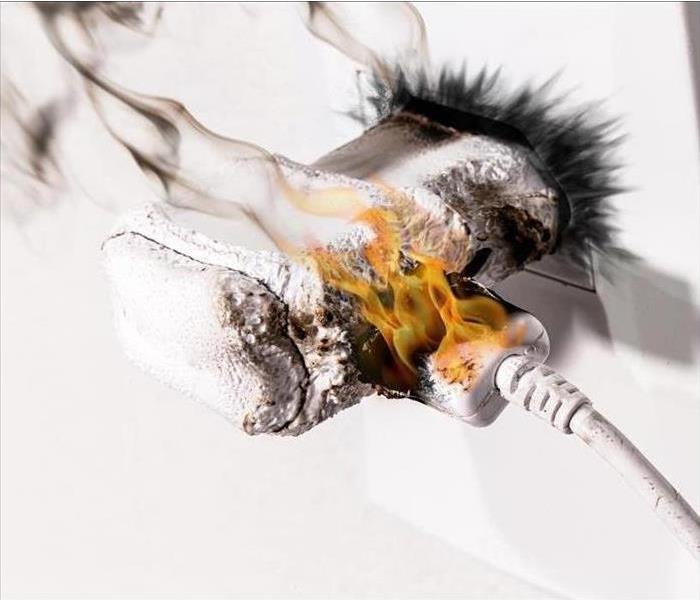 Most electrical fires are caused by faulty electrical outlets and or old, outdated appliances.
Most electrical fires are caused by faulty electrical outlets and or old, outdated appliances.
Most electrical fires are caused by faulty electrical outlets and or old, outdated appliances. The following are the most common reasons why electrical fires happen:
- Old electrical sockets and unsafe appliances
Appliances that are old and overused and those that fall short of modern safety standards are the worst culprits. Frayed electrical cords, self-jointed wires, and worn out sockets that are not properly grounded are major causes of fires. They become ready outlets for directing heat and fire to carpets, rugs, curtains and combustible plastic. Older appliances draw more power than the wall sockets can handle.
- Using light fixtures that exceed the permissible wattage
A very common cause of fires is plugging lights, lighting appliances and bulbs into electrical sockets that cannot handle higher wattage levels. Antique lighting appliances may have defective wiring that makes the appliance unstable by overheating. Decorating lights with colored paper and cloth shades can increase the risk of fire when the material or fabric heats up.
- Using multiple appliances plugged into an extension cord
Unrestricted use of extension cords is a major fire hazard. The risk of fire increases when your TV, home theatre, computer and other appliances are all plugged into a single extension cord. This creates excessive power load on a single socket which may not be designed to handle that load. So, there is a social and economic cost to damaged wiring!
- Locating portable heaters near combustible materials
Portable space heaters that use coils are potentially dangerous when they are positioned carelessly near curtains and rugs and adjacent to beds and cloth covered furniture. The chances of inflammable material coming into contact with the red-hot coils increase the risk of fire.
- Wiring that becomes defective with the passage of time
Over a period of time you add more electrical appliances such as wide screen televisions, home theatre, microwave oven, refrigerator and air conditioners. The outdated home wiring cannot handle the increased power load. Older wiring tends to heat up quickly and catches fire. If the breaker boxes are themselves defective, they cannot prevent overheated electrical panels from catching fire.






 24/7 Emergency Service
24/7 Emergency Service





